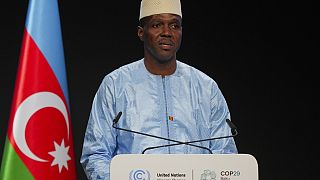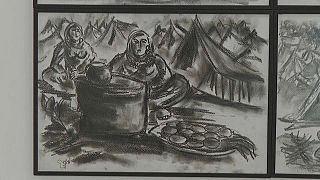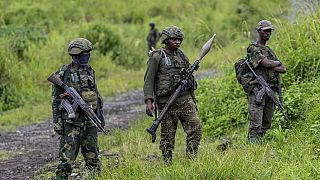Democratic Republic Of Congo
Tens of thousands of people were stuck in kilometres of traffic jams, blocking the roads out of eastern Democratic Republic of Congo, as the eruption of the Mount Nyiragongo volcano has forced people to flee their home, in the town of Goma.
He said an evacuation of part of the city had been ordered, and urged residents to leave calmly.
"The most important thing right now is to get my family to safety. We don't know what can happen with the volcano. We are also told that there is a probability of a gas explosion. We have to run away from all these possibilities for the moment," says Sergees Nguru, stuck in traffic whilst fleeing Goma.
The streets in the southern part of Goma were congested, with people walking or running, carrying mattresses, sports bags or a few meager possessions in plastic bags, and holding on to frightened children.
The United Nations said some 5,000 people are feared to be homeless.
By order of the military governor of the North Kivu province, parts of the city have been evacuated.
"Right now we can't rule out an eruption on land or under the lake, which could happen very soon and without warning," said General Constant Ndima, the military governor of North Kivu.
Ndima said authorities had arranged transport towards Sake, around 20 kilometres west of Goma, in each of the ten districts of the city affected.
"People should take the bare minimum with them, to make sure everyone has a chance to get on," he added.
Many congolese have decided to try to find refuge in neighbouring Rwanda.
"We are here at the border between Rwanda and Congo, called Grand Barriere and people cross to the other side of the border," explains Aboubakar Ali Salim, a resident of Goma.
"There were districts that had been said to be in danger in case of an eruption. Some others were not, but people who live in these neighbourhoods, that have not been mentioned, are moving anyway to take shelter from an possible eruption."
Regional authorities on high alert over possible catastrophic scenarios
The Democratic Republic of Congo has been on high alert since saturday, as Africa's most active volcano erupted for the first time in almost twenty years.
The volcano spewed out two rivers of molten rock during the eruption, one of which came to halt on the edge of Goma after obliterating villages in its wake.
So far, at least 32 people have been killed.
But authorities fear the situation could even worsen, after over 400 aftershocks earthquakes have been recorded by scientists in only 5 days.
Ndima said that the latest data including on "deformation of the ground indicates the presence of magma under the urban area of Goma, with an extension under Lake Kivu".
"The situation can change rapidly, and is being constantly monitored," he said in a broadcast address.
The governor said there were extra risks associated with the interaction between magma and the lake, including "the emission of potentially dangerous gases at the surface".











Go to video
SADC extends mandate of its troops in DRC and Mozambique
01:00
Another major eruption hits Icelandic peninsula of Reykjanes
01:19
International flights cancelled due to Indonesia's volcanic ash
01:22
Cases of new mpox strain more than double among children in DR Congo and Burundi
01:15
WHO: Mpox cases in South Kivu may be 'plateauing', but DRC seeing a 'general rising trend' in cases
02:10
Mixed reactions to Trump victory among residents in the Democratic Republic of Congo